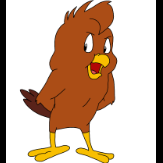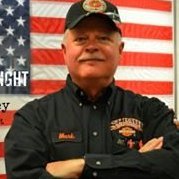Leaderboard
Popular Content
Showing content with the highest reputation on 02/05/2019 in all areas
-
Here are some pictures of my recently finished Kittyhawk F-5E in Swiss markings. Despite the shortcomings that have been mentioned about the kit, I enjoyed the build and would call it a good kit overall. I will be building more of Kittyhawk's F-5's in the future. The model was build straight from the box, with LED's added to the landing lights and Swiss decals and masks that I drew using the Matterhorn Circle 1/48 F-5 decals as a guide. Thanks for looking!19 points
-
Now that all the hard work has been done I primed the model and went over it with a fine toothed comb, fixing a few small flaws here and there and ensuring that the painting stage would be as hassle free as possible. I painted some areas with Alclad Duralumin and then used some masking fluid to simulate chipping over the airframe. I sprayed a heavy pre shade over the model with some patchy areas around places that would see a lot of wear and tear. This was followed by a thin coat of SMS Foliage Green, allowing most of the pre shade to still be seen. I then highlighted and mottled over the model using a lightened and thinned mixture of the base colour. A highly thinned mix of the original Foliage Green was then sprayed over the model to blend everything together. Some of the masking fluid removed to check how the effect looks. I used Tamiya white flexible tape to mask off the demarcation of the white tail. I then used the Tamiya masking tape that has plastic sheeting attached to it to protect the rest of the model and sprayed the white. The Boomerang is starting to look the part.10 points
-

MiG-29A in Luftwaffe Service
Alain Gadbois and 7 others reacted to Madmax for a topic
With the second exhaust assembly finally soldered and assembled, it was time to look at the covers that go over the engine/exhaust join. The kit part is fine, but virtually devoid of the distinctive panel lines on the real cover, so I scribed them and now it looks much better. Easy fix. Before the paint can flow, I like to get the probes and other break-off bits checked for fit and cleaned up so I can prime them with the airframe. The kit probes are very difficult to sand and shape, so I used pieces of hypodermic needle instead, and also sanded the AOA probes into a triangular shape. I made one more probe for the nose which is omitted from the kit, ground the static wicks down a bit, and assembled the lovely Master pitot probe. It is a wee bit more refined than the kit part! The IR sensor is just a clear plastic dome, so I thought I would pop in some detail. The clear plastic is pretty thick, so the sensor is a little undersized, but will hopefully look better than an empty space. The main wheel wells are a real masking challenge since they are pretty flat and oddly shaped. I tried wet tissue at first, but didn't like the thought of it getting stuck in all the plumbing, so I eventually cut various pieces of sponge and used our local blu-tack in places to secure it. Now, finally, some paint! First the exhaust outers. The MiG-29's exhaust shows quite a lot of "blueing", and I was very keen to try replicate the organic patterns it takes on. I sprayed the exhaust with Alclad 2 "Duraluminium" for the base colour, then sponged on some masking fluid and sprayed varying coats of "Hotmetal Blue" and "Transparent Smoke". The shapes it achieved was great, but the contrast was a little too harsh for my taste. To soften the effect, I misted some "Gold Titanium" over the blues, and then used some graphite pencil and a rust pigment to achieve a slightly softer overall effect. The camera doesn't really capture the colours, but I'm sure you get the gist of it. Now to prime the big bits... Cheers, Sean8 points -
CAC Boomerang A46-217 “Hep Cat” Finished.
scvrobeson and 6 others reacted to ericg for a topic
Thanks a lot guys. A small update. The kit tailwheel yoke was made from thin resin, and it wouldn’t have stood a chance past a light knock plus I lost it anyway! I ended up fabricating a new one from 4 pieces of brass, drilled and pinned together and then soldered to give a very strong assembly that will give me much greater confidence hauling it around the country.7 points -

"Double Widow-Maker" (T)F104-G
ghatherly and 5 others reacted to Bill Cross for a topic
Here is the Italeri (T)F104-G trainer kit. The build was pretty straightforward, with a clear instruction booklet and easy-to-follow sub-assemblies handled more or less logically. The only issues were fit (it's an Italeri kit), and some poorly-realized components. The wingtip and under-wing fuel tanks have bad seams, and will require some careful filling and sanding, especially as the filler caps are right on the seams, yet must be glued from the inside at the time the tank halves are assembled. The fuselage has only one tricky fit issue: two PE "rings" that set off the rear portion and the stabilizer fin that simply don't mesh well. I dropped it out and the parts went together without a hitch (you can't see the internal support frame they're supposed to recreate unless the engine is removed). I resisted my usual inclination to add every bit of after-market stuff around, and only replaced three items: the exhaust nozzle (undersized and has oversimplified details), swapped for the Eduard resin one from the early, American-supplied GE J79 engine with scooped-out blade ends. The kit's Martin Baker ejection seats are undersized, again with simplified details. So I replaced them with two AMS resin versions. That saved wrangling with photo etch seat belts and other rigamarole. Finally, I added a Master Models pitot tube for the front, since part of it was bare metal on the actual aircraft.6 points -
ZM Ki-45 Toryu (Nick)
Seversky and 5 others reacted to b757captain for a topic
Hi guys, Well, here she (he?) is! I picked up the kit in Tokyo right after they were available and, uncharacteristically for me, I decided I just had to build it. I gotta say, what a fantastic kit! The engineering, molding, detail and fit is superb. I only had two areas that, due to operator error (me ) I had to trim a little for fit, otherwise it falls together with no fuss, no drama. The kit comes with duplicate parts trees for the fuselage, wing and nacelle components in both clear and gray plastic. I opted to use the gray - supposedly by buying a few extra sprues another aircraft could be built from the leftover parts but I'm not going there in this post. I only found one boo-boo - the wingtip nav light lenses in the clear sprue are molded frosted, whereas I think they probably should have been clear (I know, that obviously renders the kit unbuildable but I pressed on and - voila! ). Disclaimer: that was a joke . I did a little interwebs research before applying paint for the interior/cockpit color and found every opinion under the sun! The range seemed to narrow from light brown or khaki through various shades of green to black. Well, that narrowed it down! Of course I'm trying to lock down the color researching on my phone while I'm standing in front of the paint rack at the hobby store (where all the paints are labeled in Japanese!), but there seemed to be a favored consensus of Khaki Green. Hey, there's a bottle right there! (Mr. Color 54). Of course, right next to it is Khaki and I didn't discover until I got home that I liked khaki better. Darn. Not really interested in a return 2 hour train ride, so I just used the KG. There's another Nick being built in the WIP section and you can really see the difference. I should have used Khaki, but too late now! The rest of the paint is a mix of Tamiya and Mr. Color, the exterior undersides are an eyeball approximation mixed starting from IJN Gray and the topsides are IJN gray shaded with RLM02, The green is RLM83. I did some subtle weathering but as usual, my photography can't seem to show that very well. Decals are from the kit, and a note here. The kit offers two build/marking options. I wanted the early version with separate exhausts and open rear cockpit but the color scheme for that one is overall dark green. I wanted the camo (lizard? salamander? Gorn? Godzilla?) scheme, so I went ahead and did that. Okay, enough talking, on the the pics: More images to follow, Cheers, Mark san6 points -
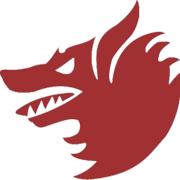
1/32 A-6 drop tanks
Sunday Puncher Tonk and 5 others reacted to red Dog for a topic
i built a KA-6D in 1/32 with 4 drop tanks I also read that electric intruder post saying that the tanks were awful, so i compared the trumpeter A-6 and the hasegawa tanks Well to me it's not that awful. Yes there's a difference, but barely visible Length is the same, front section is the same, the hasegawa are just thicker at the end section. Something I could really live with; So in the end, I sticked to the trumpeters. Note also the missing details at the rear tip, I made these with decals You biggest problem is not the tank actuallly, it's the way the tanks are attached to the pylon. The intruder have a very noticeable downward angle when loading stores, including the wing bags. Trumpeter wants you to load them flat and that is a real eye attractive mistake. That's the trumpy way: and after the correction: Hope that helps, have fun with the KA-6D, it's a great kit. But it needs a bit of love, especially converting to tanker beware wing fence and DECM antennas More info in my WIP6 points -
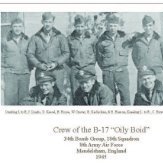
1:18 Hobbyboss AV-8B Harrier
Greg W and 5 others reacted to patricksparks for a topic
A little update. For those who have recieved or are going to get the parts that Harold/AMS has reproduced from the masters that I assembled, I have found an error on my part on the Instrument panel shroud. When I added the defogger vents on the left and right sides I didn't make them thin enough, I had fit the master into the foward windscreen and it was tight but I(stupidly) thought that there would be enough shrink in the resin and silicone that it wouldn't be an issue, WRONG... The master was made up of thin guage vacuum forms and was compressing enough that I thought it was ok. So I have been working with the casting(thank you Harold, the parts look great !!!) I have sanded the defogger vents sides down to remove the outer wall(see photos, original master on left, resin on right) and then sanded the sharp outside corners to look rounded over again, I then sanded the bottom of the shroud until the defogger tubes are down at least even horizontally with the windscreen frame if not slightly lower(see photos). Also I found that the kit windscreen has a significant ridge on the inside horizontal rails that henders the fit also, so I scraped them down(see photo) Hope this helps, sorry for the screw up !!!6 points -
Frank, George's Brother
Alain Gadbois and 5 others reacted to Bruce_Crosby for a topic
Sorry Guys, I hadn't uploaded some photos and the last one, with the SWPA test, isn't the final result. I managed to screw up the print setting on the first run of decals and they were too small. so here's the decals at the right size. Untitled by Bruce Crosby, on Flickr Regards, Bruce Crosby6 points -
Hi all, This is the first model I've completed in about two years, Wingnut Wings Hansa-Brandenburg W.12 Early. I Used Aviattic's WW1 German Naval Hex decals instead of the kit ones. Top wing crosses are masked and airbrushed after I had an incident with the decals, and had to scrap them.I hope to put this in a water diorama later on, just have to get the products and find the time to do it. All comments and critiques welcome, Thanks for looking, Cheer's, Jeff.5 points
-

"Double Widow-Maker" (T)F104-G
HL-10 and 4 others reacted to Bill Cross for a topic
The decals were a bit of a composite: many of the stencils are from the nice Cartograf-printed sheet supplied with the kit, but a number were taken from Danny Coremans' DACO Products complete F-104G set. Its five sheets perfectly compliment his superb reference work on the German Starfighter which I used every step of the way. The decal instruction booklet has camouflage schemes, unit badges, "zappings" (temporary markings popular with Luftwaffe units), and fuselage codes for every singular regular unit. But it also has the alternate naval colors and markings, so I chose a set from an actual aircraft that flew with MFG1 (Marineflieger Geschwader 1. The unit was active from 1959-1993, flew 132,000 hours in F-104Gs, and lost eleven pilots to fatal accidents. The eagle in the unit coat of arms was borrowed from the WW2 Luftwaffe unit Kampfgeschwader 30, likely because KG30 had extensive naval engagements on several fronts. My decision to build the aircraft with the canopies closed arose from my struggle attempting to wrestle a build of the single-seat version into shape. That build sports all the AM stuff I could find, and after much cutting, sanding, filling and filing (none of which has yet produced an end point), I just wanted to keep things clean and easy. It's a decision I don't regret. The photo below shows some of the additional "plumbing" I added with wire, including brake lines.5 points -
Revell Bf 109 G-10 Erla
Paul in Napier and 4 others reacted to Pastor John for a topic
Hi everyone, thanks for kind words. Hope you do not mind me posting more pics - when you do so few models you get over-excited! I spent some time trying to carefully airbrush out some of the bleaching too much AK Matt varnish had caused. I also added a little more exhaust stain but I did not want to do it as I can not imagine this bird got much of a service life. Photography is crazy - every time I take a picture the green is different depending on lighting conditions and ISO. I did not use a flash this morning - just lower F number so not so much focus but more light - result lighter green than with flash?????? Lower Focal plane beats Flash paper scissors game! - New one for long journeys in car with kids.5 points -
Ha ha ha good one! Thanks to all you guys for looking in on me and the encouragement! Ok... according to the reference book and images I'm working from, I had to remove some ECM bumps, while I was at it in the area I took the opportunity to fill some sink marks (not real bad ones) and rescribe some unfinished panel lines. I have, since then, moved on to the main fuselage and poured thick gloss white latex house paint into the engine intakes, (plugging one end with putty) effectively making them seamless...some pictures. A picture of the ECM bumps needing removal (for the A version) one down One of the sink marks ECM bumps gone, sink marks being filled with CA Forward fuselage halves finally joined latex paint poured into the intakes5 points
-
Focke Factory II
Landrotten Highlander and 4 others reacted to Bruce_Crosby for a topic
Just another quick update: thinning the seat backs as the kit ones are way too thick. I got some grief for this on the FW-190 Facebook pages. Gerry Crandall says the seat back is armoured, it's actually 8mm thick. When I ran the Vernier over the Hasagawa seat, it's as near as dammit 1mm whereas it should be 0.25mm. Now my thinning works out between 0.34 and 0.4mm, still too thick in scale but visually a heck of a lot better. The painted seats in the centre are for the current batch of seven D series, the grey ones on the left are for the Hasegawa A series in the pile, the three blue on the right are for PCM early A series and their Ta-152 C kits. There are a couple more PCM kits somewhere! And three Zoukei-Mura H versions of the Ta-152 as well. The second photo is my thinning kit. The two main tools are the scrapers, one is from the Zoukei-Mura Pro-Zetsu range, the other is the Trumpeter copy. The trumpeter one isn't bad, just the Z-M one is so very, very good, Untitled by Bruce Crosby, on Flickr Untitled by Bruce Crosby, on Flickr Regards,, Bruce Crosby5 points -
To avoid troubles when attaching the cockpit tub, I took the option to attach the sidewalls on the fuselage first and not to the tub. I will fill the gaps with Evergreen to center the tub in the fuselage in the end. But first, do not forget the canopy locking system5 points
-
ZM Ki-45 Toryu (Nick)
ghatherly and 4 others reacted to b757captain for a topic
Final pics: In conclusion, this was a very enjoyable build! It helped reset my modeling mojo after the Fly Hurricane. Now I think I will tackle the SH F-80! Cheers, Mark5 points -
Hi folks Hi Rich - yes I will do some mild weathering with washes etc and scratching the paintwork so it should bring it to life a bit What are you working on? haven't seen a WIP in a while or have I missed it? Hi Craig, thanks for dropping by the stringers were the product of some trial and error, but I ultimately learned that I could clamp the PE strip with the rivets on it in my longest Hold'nFold tool so the central stringer would but against the flat edge and then just went along it wicking thin CA to get a start holding it in place - then once it was sturdy enough, I took it out of the tool and wicked CA along the whole join either side.. in only 2 of 12 stringers did it actually stick to the tool so it worked quite well - here it is with an offcut.. HTH Peter4 points
-
Ok Wheels and wells and things. Main wheel bays....Painted. Nose gear well. Sitting on its own feet. Thats it, Dan4 points
-
Takom Canadian C2 Leopard4 points
-

Proper Plane wheels
Out2gtcha and 2 others reacted to Proper Plane for a topic
Hello friends! Today we decided to tease you with our new project - a Continental 760x100 resin wheels. They are compatible for 1/32 scale models of different german planes - Albatros, Fokker D.VII, Pfalz and Roland. We are expecting they will be available in March 2019. https://properplane.com/index.php?route=product/product&path=62&product_id=1143 points -

Dragon BF 110 C-7
BradG and 2 others reacted to BloorwestSiR for a topic
Thanks Brian! Here's a quick test fit. Thanks Shawn! Would the same apply to a BoB aircraft as far as exhaust staining goes. You're right the late war aircraft were sooty. Carl3 points -
made a start on the front IP still a few touch ups to do also made clear lenses for the instruments Mark3 points
-
Most of the starboard wiring guts have now been added, so I'm rapidly approaching painting time, which I dearly enjoy. Sorry for the lousy photo (it was the best of three).3 points
-

Dragon BF 110 C-7
BradG and 2 others reacted to BloorwestSiR for a topic
Thanks Max! You're right that I generally model clean airframes but since it seems so typical for the plane to have them, I thought I'd give them a go. I used Tamiya Smoke in thin coats and then added a drop of NATO black for a couple more light passes. Carl3 points -
3 points
-
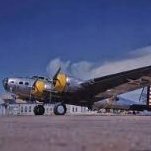
HK B-17...C 5/4 sweating the metal
Derek B and 2 others reacted to brahman104 for a topic
Alrighty, after replying to 11 comments I think it was time to summarise the latest effort in a new post The latest little adventure in the journey has been aimed at trying to wrangle some acceptable looking transparent parts. Now, as you guys know, the early B-17's had some really interesting looking clear parts, prior to the introduction of power turrets on the E model. First of all, and perhaps more importantly, is that after lengthy discussions with Terry (TKB) about cowling shapes and always referring to this build as a C/D as I hadn't made up my mind, I finally decided that I will be making this a C model. The two mains reasons are a) cowl shape and no flaps (just to differentiate a little more from later models) and b) single .50 mounts in the radio room and bathtub, so there's more room to see the detail inside! Anyway you guys came for the pics, so here they are.... First of all, I made patterns in Hydrocal for vac forming an assortment of clear parts. What's the big rectangular one you might ask? hopefully, that will be become clear soon (pardon the pun....) First of all, I did the observer's dome. This came out looking pretty good, and best of all, a nice match to the hatch I'd already made in the laser cutter.. *disclaimer - I have yet to polish theses too Seeing I was on a win, next came the waist windows. This is where the rectangular piece came in - it is a representative piece of fuselage with the correct curvature at the waist window. I would form oversize pieces then patiently whittle them down to fit in the previously made holes in the fuselage. Then, I made the removable window separately, including its triangular shaped depression at the rear for the gun barrel. This was then traced onto the waist window and the excess carefully removed. This took most of the day to do, with many, many dry fits!!!!!! Till I finally had a very nice fit in the existing window Now the real trick. I also had to continue the relief on the back side of the existing window (although this is formed in aluminium on the real thing, so I didn't include it in the master shape. I had an idea that I could just vac-form and extra 2 removable windows and graft the triangle piece onto the rear. And so with much more careful "whittling" of the acrylic, I ended up with this.... And now for the "in-use" shots... Yes, they still need a lot of cleaning up, but for something I have been absolutely dreading doing for so long, it didn't really end up being that hard, just a lot of careful and laborious filing and sanding to get things to fit. Not completely there yet, but I'm chalking that up for the win!!!!! I think I'm finally starting to tame this beast!!! Craig p.s. Luckily the Townsville floods did not affect the house, or much more importantly, my workbench!!!!!!!!3 points -
Not sure if this has been announced in Nürnberg, but: kitmaker.net - Eduard has released details of the kits they will be releasing during 2019 The one and only LSP for 2019 - Bf 109-E Legion Condor [July 2019] – 1/32: Juraj3 points
-

Dragon BF 110 C-7
BradG and 2 others reacted to BloorwestSiR for a topic
It was a busy weekend with family activities but I got a bit done at the bench. I got the primary camo done on the wings. I found a couple stray scratches on the wings near both wingtips so those were fixed and sanded smooth. I'll have to retouch them shortly. In the meantime, i decided to see what the plane looked like so I slipped the wings into place. I never realized how big a 110 really is. Carl3 points -
ZM Ki-45 Toryu (Nick)
ghatherly and 2 others reacted to b757captain for a topic
More pics: Cockpit pics to follow.3 points -
And where we're at this evening... Entry doors in place. These were going to be in the open position, but client would like to be open and close canopies, so fitted closed now. Rear is based on a spare front door, cut to size, twisted to match fuselage profile and new 'hinge' added from stretched sprue. Very happy with fit at this stage - need to get some paint on: Dummy red 'gun squares' masked and sprayed - but I think they're a little dark - so will re-mask and touch in: Nose underside glossed ready for black aircraft code 'V': Dry assembled prop (excuse dog hair - not noticed when I took photo - but had just stroked the dog!). Some decals to go on the spinner - and everything will be matted down - but starting to look busy: Blue skies... Iain3 points
-
Tamiya Bren Carrier3 points
-
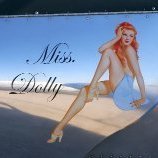
Some Targets for view (my tank builds last year)
Bill Cross and 2 others reacted to LSP_Ron for a topic
Tamiya Tiger 1 with homemade zimmerit3 points -

Some Targets for view (my tank builds last year)
Bill Cross and 2 others reacted to LSP_Ron for a topic
Takom King Tiger3 points -
One less in the stash! Although kit says 1/24, it will fit perfectly with my 1/18 TV car collection.2 points
-
Hello again all, its been a few months since I have posted any of my builds. I finished my f-16 on 6/12/16. This is everything I have into this build. First of all this is the 1/32 Tamiya f-16 block 50 kit converted into a f-16 block 42 for the Ohio Air National Guard out of Toledo, Ohio. I added a few extras to the build. The extras that were used were the eduard interior, eduard canopy mask. Cross Delta scab plates, master model aoa probe. Also added was the academy f-16 sniper pod, and a piece of vinyl was cut out and added to the tail base for the blos modification for modern f-16's by Harold at AMS resin. I also used the ZACTO MODELS aim-9x's which were very nice as well. And for the decals, the decals were by JAKE MELAMPY of Reid air publishing BIG SCALE VIPERS sheet, these decals were amazing to work with, if you see this Jake, awesome job !! The fun part about this build was trying to get the right paint formula for this paint scheme, the have glass jets are very hard to paint, especially trying to get the metallic sheen that is has it the sun. Me and Mike Reed came up with a formula and i think it looks that part, well at least in my opinion. Well here are some pictures, I hope you guys like them. Any questions or comments are welcome Jeff2 points
-

Look!! It's a bird...It's a plane... Well... Komplete 18/3/19
mustang1989 and one other reacted to Gazzas for a topic
HI Everyone, Inspired by a bit of youtube vid from Cross of Iron, the Sam Peckinpah classic... I've decided to try to display the legendary mobility of the T-34 with a model. I started fudging together the base a few days ago. Including pine and plaster of Paris, the teeny little base weighs almost 2 lbs... That's .997kg to the metrically inclined. Here are the first pics: Thanks fer looking! Gaz2 points -
superb - the chromate paint just brings it nicely together. Are you going to weather it? IIRC you are not a big weathering guy, but a lovely wash would make those details pop. Also, as you know, chipping and scratching is easy when you are using real metal. Sorry, not telling you how to do your job, but I come from an armour modelling background and I can't help myself!2 points
-
small update all rivets fild and sanded on the engine covers placed the first feultank back to the bench some more filling,sanding and scribbing to do Mark2 points
-
thanks chaps Hi Jay - good point - those stubs are part of a soldered bigger brass structure with a big plate going across the top of the wing roof - it makes the roof artificially shallow, but is a proven way of supporting the weight - by the time the Spit was finished it was over 2Kg! you might be able to see the plates here before the tube was cut down to stubs.. Thanks Mark - the first two sets of ribs were done before I spotted & worked out how to do the returns - I could have remade them all but decided to just do it on the bigger ribs that can be seen in the most open part of the well just a secret between you and me right TTFN Peter2 points
-
Okay, I got a little more accomplished on the interior. I managed to get past pages 1&2 and am now on page 3 of the instructions. The forward flight deck is now complete. Another view of the office. I picked out a few more details on the radio gear. A word of caution for the modelers using the Airscale PE instrument panel: Ensure you have a good match because it can affect the fit of the IP in the forward fuselage if no aligned properly. Another view. I detailed the radio gear under the navigator table, sadly, it will not be seen. The starbord side of the inside of the forward cockpit area with the electrical panel fixed in position. Below is the forwad section of the starboard side with comms and portholes in place. And........just when you thought you've seen it all, the port side with gear and portholes in place. Now it's on to the forward gun turret. I did order the DN canopy and turret mask set for this airplane. I know I could have masked it myself, but using a pre cut mask set on my 1/48 scale Lancs spoiled me, so I will be awaiting those masks. Thanks for stopping by and scoing it out.2 points
-
Quick update..went a bit nerdy in the cockpits..scratched up a few parts,bits and bobs kinda thing...ground down the kit side walls and went at it. Tried to make them look busy and spitfire ish..was all we were after. More later..thanks for following. Bill.2 points
-

1/32 Kitty Hawk F-5E Kicked Up A Notch. Oct 3/19. Finished!
blackbetty and one other reacted to chuck540z3 for a topic
At the front on either side of the gear well are gun vent doors that are molded open. They should be closed and another molding flaw fixed. To close the gun vents, I trimmed the back of the vent doors, deepened the hinge with a scriber, then bent them flat. They also need to be shortened about 10% and the corners rounded before you install them. Two more areas fixed and the panel lines are now straight. There is a lot of trimming and dry fitting to get any of these pieces to fit together. Almost every join was modified in order to do so. Kind of a pain, but kind of fun too. With the styrene spacer used at the front of the windscreen, the join is now fairly flush and the top center piece fits perfectly. Before I fit and glue the gun doors closed, I need to install the guns and modify the parts so that I can install the gun barrels at the end of the build. Here I have cut the gun breaches back to fit my modifications and used minimal gun parts. The key is to just get an anchor point to slip the gun barrel into later. The openings at the front of the gun compartment were widened slightly and the base of each gun barrel was narrowed, so they now just slip in from the front with minimal effort. The gun door fit? Not so good. This kit is made for doors to always be opened with no parts made for closed doors. As a result, the fasteners are molded open and the closed fit is crappy. Time for some more “fun” I guess…. Later boys and thanks for your input. Cheers, Chuck2 points -

1/32 Kitty Hawk F-5E Kicked Up A Notch. Oct 3/19. Finished!
jgrease and one other reacted to chuck540z3 for a topic
Thanks Guys! February 2/19 This next update was fun. It was the right combination of sufficient kit quality with enough flaws to keep my mind working on how to fix them without too much pain. Think of somewhere between the 1/32 Tamiya Spitfire gem I last made and the 1/32 Trumpeter A-10 turd, which I managed to polish a few years ago. With the cockpit finished, it was time to put it to bed within the front fuselage. After trimming and dry-fitting it at least a hundred times, it slipped in like a hand in a glove. As mentioned in my tutorial above, thick CA glue and styrene spacers are the ticket. With glue now bonding the sidewalls, the fit is much better than before. Before I glued anything, I painted the back of the tiny formation lights and glued them into place from the inside. Warning: These little suckers are easily lost! Something that didn’t fit like a glove was the gun compartment to the front of the cockpit, due to the thick resin glare shield and IP. Since I’m not showing the guns, no worries and no need to be neat and tidy- just cut a chunk out with sprue cutters. This cutout also allows you to glue the back of the glare shield to the gun compartment for strength, which is also much needed for the very flimsy join in front of the windscreen. After careful measuring, this little 1.5mm styrene spacer seemed to be around the right thickness. There are a few flaws on the bottom of the fuselage, most notably the misaligned panel lines. It’s funny how some are aligned while others aren’t. Also, according to the reference pics I could find, there’s a long and thin molding flaw along each side. Most modelers who have made this kit have found this flaw on the front part behind the nose cone. While there is a massive gap on the top of it. Fixed. Note that I use CA glue as a filler for everything, so the clear glue doesn’t totally hide old flaws.2 points -
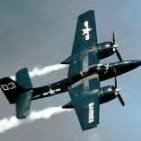
"The Star of Africa" - Hans-Joachim Marseille's Do-335 A-2/Trop - Yellow 14 - FINISHED!
Paul in Napier and one other reacted to Out2gtcha for a topic
Thanks again for the kind words guys. Once again, I put off re-scribing. I just really hate re-scribing!! This time I got caught up in the spinners and props. I ended up finishing them all out, as I had to put some masking down to split each with RLM 70 and white. The props got RLM 70 for the blades and gunmetal and aluminum for the hub/center section. After getting all 3 colors down on the props, I got everything assembled: All for now, I'm off to the store to pick up a few things for the fiance, then it's off to They Shall Not Grow Old later tonight. After we get back from the movie I'll likely be back on the Do-335 tonight. Cheers!2 points -
Hi all, I bought the kit today2 points
-
I've added a few little bits of wire and solder to simulate the massive clutter in the gear bays, I think I'd call it about 1/2 done here starting work well under way2 points
-
I really have no idea what I’m doing but boy am I having a blast experimenting and trying new things. Most attempts at trying something new have failed but I’ve managed to put together a few acceptable applications and I’ve now got to this stage. I took some masking tape, cut it up and painted it white, and used it for the white panel tape. I guess you could call that scratch built haha. I’ve still got a ton of smaller decals left but I need to get a good gloss coat down. I have Testors dull and gloss spray cans. I’m really hoping I don’t mess all this work up by spraying it with the gloss. Any tips or warnings on using the stuff would be much appreciated. I’ve loved every minute of this kit so far and as it begins to wind down, I’m looking forward to my next build. Any suggestions? Thanks2 points
-

"Willie the Whale", FINISHED
Madmax and one other reacted to blackbetty for a topic
86 by karl holubar, auf Flickr2 points -
Focke Factory II
Landrotten Highlander and one other reacted to Bruce_Crosby for a topic
Hi Guys, Another chunk of photos. Wheel well and spar units ready for primer. One of them has a small brown A Frame which is a scratch built replacement part for one eaten by the carpet monster. Lower wing inserts from an A8 kit to represent the Mk108 panels. The inserts modified. The MG151 ejection ports were cut off and scars filled and smoothed. Chain drilled lower wing to start cutting the new ejection port. The wing insert in place and the ejection port cut. Now I need to fabricate the chute lips to go inside. Wing top gun blisters relieved from a Hasegawa A kit. The D-13 nose from Jerry Rutman being reprofiled for my D11. Not quite there yet. Regards, Bruce Crosby2 points -
Tamiya F-16 have glass scheme
Model_Monkey and one other reacted to Stinger16 for a topic
now the same pictures under natural light. You can really see the have glass sheen now2 points




